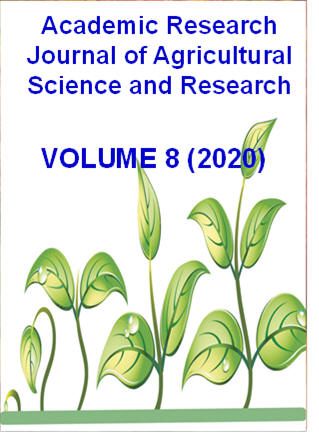|
ISSN: 2360-7874 |
Academic Research Journal of
Agricultural Science and Research |
|||||||||||||||||||
|
Vol. 8(1), pp. 24-36, January 2020 Research Vegetation Structure and Diversity of Grazing Lands in Abijata-Shalla Lake National Park, Oromia Regional State, Ethiopia
Meseret Tilahun, Tessema Zewdu and Abule Ebro
1Oromia Agricultural Research Institute, Adami Tulu Agricultural Research Center. P.O.Box,35, Batu. Corresponding author’s E-mail: mesereta28@gmail.com, 2Haramaya University, tessemaz@gmail.com, and 3ILRI (International Livestock Research Institute, abuleebro@gmail.com
Accepted 11 November 2019
This paper aimed to assess the vegetation structures and diversities in grazing land of the Abijata Shalla Lake National Park in Ethiopia. The stratification was done before sampling based on grazing intensity and the random sampling techniques were used. The two grazing intensities* 12 sampling site* five plots per sample site=120 samples were used. The 10m*10m, 5m*5m and 1m*1m plot size were used for trees, shrubs and herbaceous respectively. The indivudal abundance, density and important value index of each plant species were estimated. The height of woody vegetation was estimated by clinometers and the DBH at 1.3m and 0.3m by caliper for tree and shrubs respectively. The proportions of desirable and undesirable species, richness and diversity with the life form of herbaceous were determined. Then, the fresh weight of biomass was clipped and sub-sample were oven dried at 105oC for 24hr to determine the dry matter. A total of 64 species, that belonged into 27 families were identified, whereas 24 were woody and 40 were herbaceous. The height of woody vegetation ranges from 2m to 25m and classified into five classes as (2-5m, 5.1-10m, 10.1-15m,15.1-20m and 20.1-25m). The DBH also classified into six as (<10 cm, 10-20cm, 20-30cm, 30-40cm, 40-50cm and >50cm). The high proportions of (45.35%) woody species found in (10-20cm) DBH classes in the heavy grazed area and (38.78%) in the low grazed area. The densities of woody trees decrease as the height and the DBH increases. Furthermore, the herbaceous species have a significant variation (P<0.05) of species richness, diversity and evenness with grazing intensities. Generally, the high grazing intensity has negative impacts on the vegetation structure, diversity and vegetation biomasses. Therefore, the sustainable management and intervention of community based conservation was suggested to improve the ecosystem and abundances of vegetations.
Keywords: Herbaceous species, Important value index, Shrubs, Species richness, Dry matter, Species diversity, Diameter at breasy height
How to cite this article (APA Style): Meseret T., Tessema Z (2019). Vegetation Structure And Diversity Of Grazing Lands In Abijata-Shalla Lake National Park, Oromia Regional State, Ethiopia. Acad. Res. J. Agri. Sci. Res. 8(1): 24-36
|
|||||||||||||||||||
